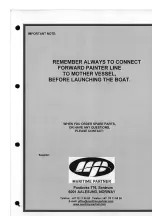
Manual for Induction Motors and Generators
Commissioning and Start-up -
51
3BFP 000 050 R0101 REV E
***Following chapter for bearing type: Sleeve bearing
5.7.3.2 Machines with sleeve bearings
Verify that no rotating parts rub against any stationary parts. Verify through the oil sight glass
that the oil level inside bearing is correct. The correct oil level is in the middle of the oil sight
glass, but as long as the oil level is within the oil sight glass, the level is acceptable.
Check the temperature and the oil level of the bearings continuously in the beginning. This is
particularly important for self-lubricating bearings. If the temperature of the bearing suddenly
rises, the machine should be stopped immediately, and the reason for the temperature rise must
be found before the machine is re-started. If no logical reason is found from the measurement
equipment, it is recommended that the bearing is opened, and its condition verified. If the
machine is under warranty, the manufacturing factory must always be contacted before any
action is taken.
For self-lubricating bearings, the rotation of the oil ring is verified through the inspection
window on top of the bearing. If the oil ring is not rotating, the machine must be stopped
immediately, as a stopped oil ring will result in bearing failure.
For flood-lubricated machines, the oil supply pressure is adjusted with the pressure valve and
orifice. The normal supply pressure is 125 kPa ± 25 kPa (18 psi ± 4 psi). This gives the right
flow of oil to the bearing. Using higher supply pressure gives no additional benefit, but can
cause bearing oil leakages. The rate of oil flow is also specified on the dimensional drawing.
NOTE: The lubrication system should be constructed so that the pressure inside the bearing is
equal to the atmospheric (outside) pressure. Air pressure entering the bearing from
either inlet or outlet oil pipes will cause bearing oil leakages.
5.7.4 Vibrations
For a comprehensive discussion on vibrations, see
Chapter 7.4.2 Vibration and noise
5.7.5 Temperature levels
The temperatures of the bearings, stator windings and cooling air should be checked when the
machine is running.
The winding and bearing temperature may not reach a stable temperature until after several (4-
8) hours, when running at full load.
The stator winding temperature depends on the load of the machine. If full load cannot be
obtained during or soon after commissioning, the present load and temperature should be noted
and included in the commissioning report.
Recommended settings for alarm and trip levels see main connection diagram and
.
















































